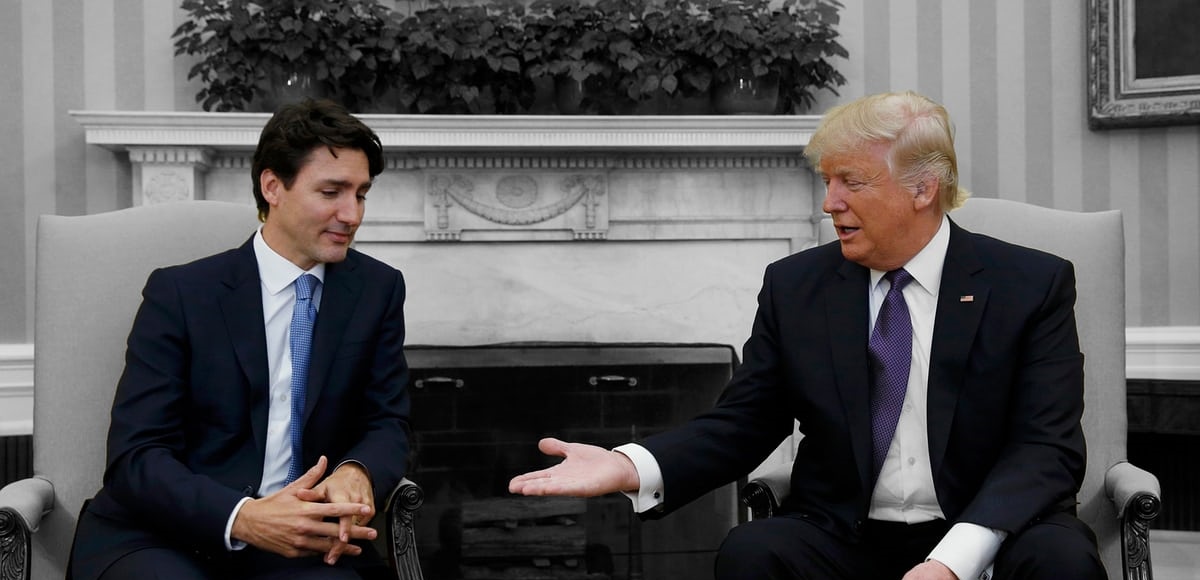The looming war on trade
June 1, 2018 | Expert Insights

The United States government has announced that it would be imposing tariffs on aluminium and steel imports from Canada, Mexico, and the European Union.
Background
Canada and Mexico are traditionally one of US’s key allies. Canada and the US share a border and enjoy increasingly close cultural and economic ties. The relationship between Mexico and the United States has been under review for several years. The two countries share a maritime and land border in North America. Many agreements have been conducted between the two countries bilaterally, such as the Gadsden Purchase, and multilaterally, such as the North American Free Trade Agreement. Both countries are members of various international organizations, including the Organization of American States and the United Nations.
However, ties between Mexico and the US have significantly soured since US President Donald Trump took office. He has promised to build a wall between the US and Mexico to curtail illegal immigration and noted that Mexico would pay for this wall. The Mexican government for its part has denied that it will any such thing.
In addition, ties have further deteriorated since President Trump raised the possibility of ending NAFTA. NAFTA, which came into force in 1994, is an agreement signed by Canada, Mexico and the US. This trilateral trade bloc eliminated nearly all tariffs on Mexico’s exports to the US and vice versa. Most of US-Canada trade was already duty-free before the agreement was signed.
Protectionism has become a defining theme for world leaders, especially US President Donald Trump. He pulled US out of the Trans-Pacific Partnership, details of which can be found here. He was also a vocal critic of NAFTA while campaigning. He said, “NAFTA is the worst trade deal maybe ever signed anywhere, but certainly ever signed in this country.”
Analysis
In May 2018, the United States has said it would be imposing tariffs on aluminium and steel imports from Canada, Mexico, and the European Union.
The news has been confirmed by Commerce Secretary Wilbur Ross. He revealed that there would be a 25 percent tariff on steel imports and a 10 percent tariff on aluminium imports from the EU, Canada and Mexico. This would go into effect at midnight on Friday.
"We look forward to continued negotiations, both with Canada and Mexico on the one hand, and with the European Commission on the other hand, because there are other issues that we also need to get resolved," he said.
Canadian Prime Minister Justin Trudeau, who has managed to maintain cordial ties with President Trump despite contentious negotiations regarding NAFTA, was visibly frustrated. In a rare show, he expressed anger and condemned the actions. “Let me be clear: These tariffs are totally unacceptable. This is not about the American people. We have to believe that at some point, their common sense will prevail but we see no sign of that in this action today."
Trudeau, a regular advocate of free trade and multi-lateralism, placed the blame squarely at Trump’s feet. "Today’s decision belongs entirely to the U.S. administration. That was their choice," he said. “The Trump administration simply doesn’t understand its measures will hurt Americans,” he said.
“We will continue to make arguments based on logic and common sense and hope that eventually they will prevail against an administration that doesn’t always align itself around those principles.” In addition, he has also declined to meet with the US President.
European Commission President Jean Claude-Juncker responded to the announcement, saying the EU will impose countermeasures on the US. "So, we will immediately introduce a settlement dispute with the WTO [World Trade Organisation] and will announce counterbalancing measures in the coming hours," he added. "It is totally unacceptable that a country is imposing unilateral measures when it comes to world trade."
Leaders such as German Chancellor Angela Merkel and French President Macron have both forcefully spoken against these tariffs. They are also among US allies that have now begun showing signs of frustration with the present government.
Assessment
Our assessment is that the next few days are going to highly critical for the future of world trade. Depending on the actions taken by the international community, the world could possibly be at the brink of a trade war. By painting itself into a corner, the US government is now in multiple trade conflicts with several governments including China and India. Would this strategy work for US President Donald Trump?








Comments